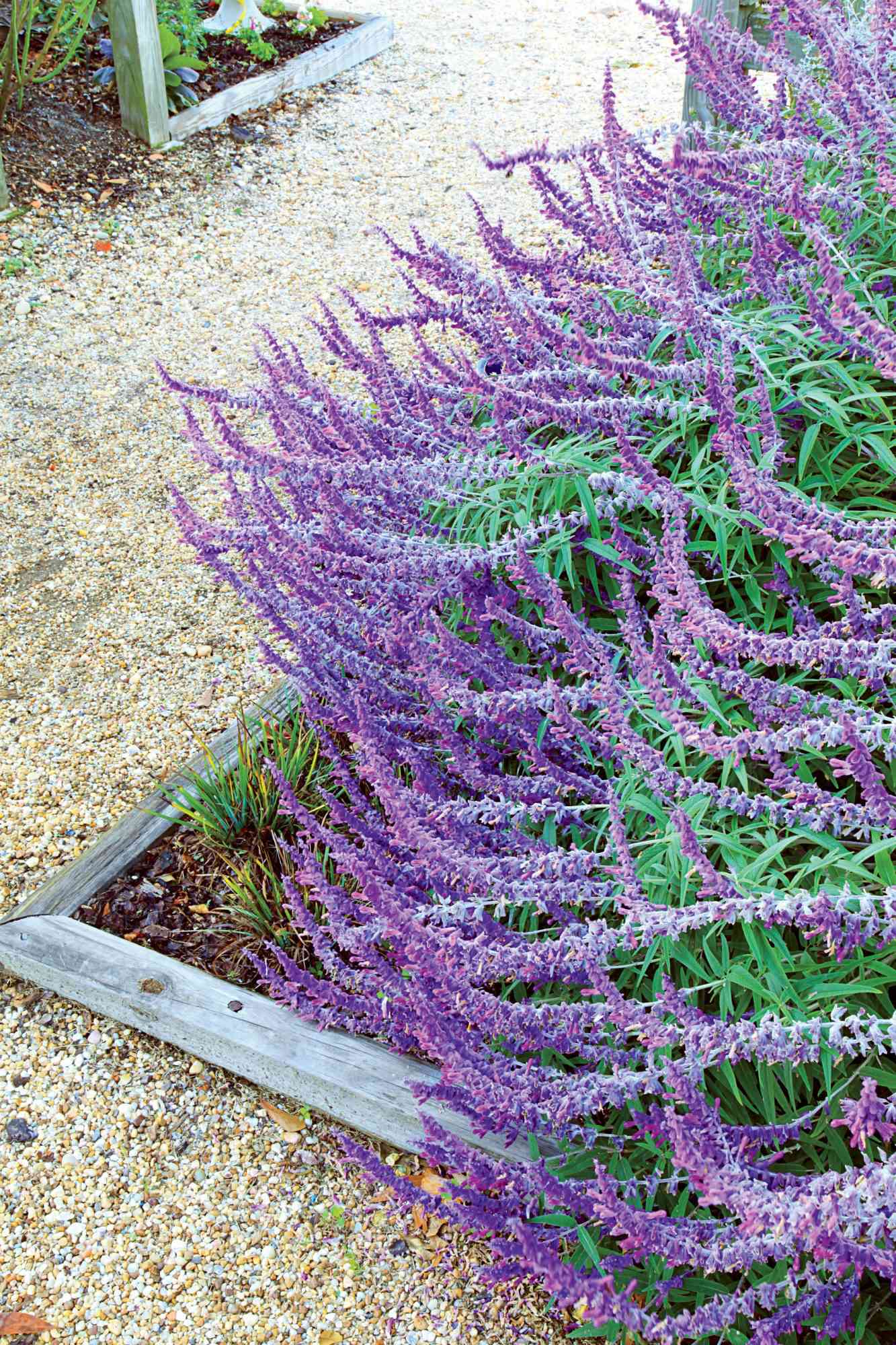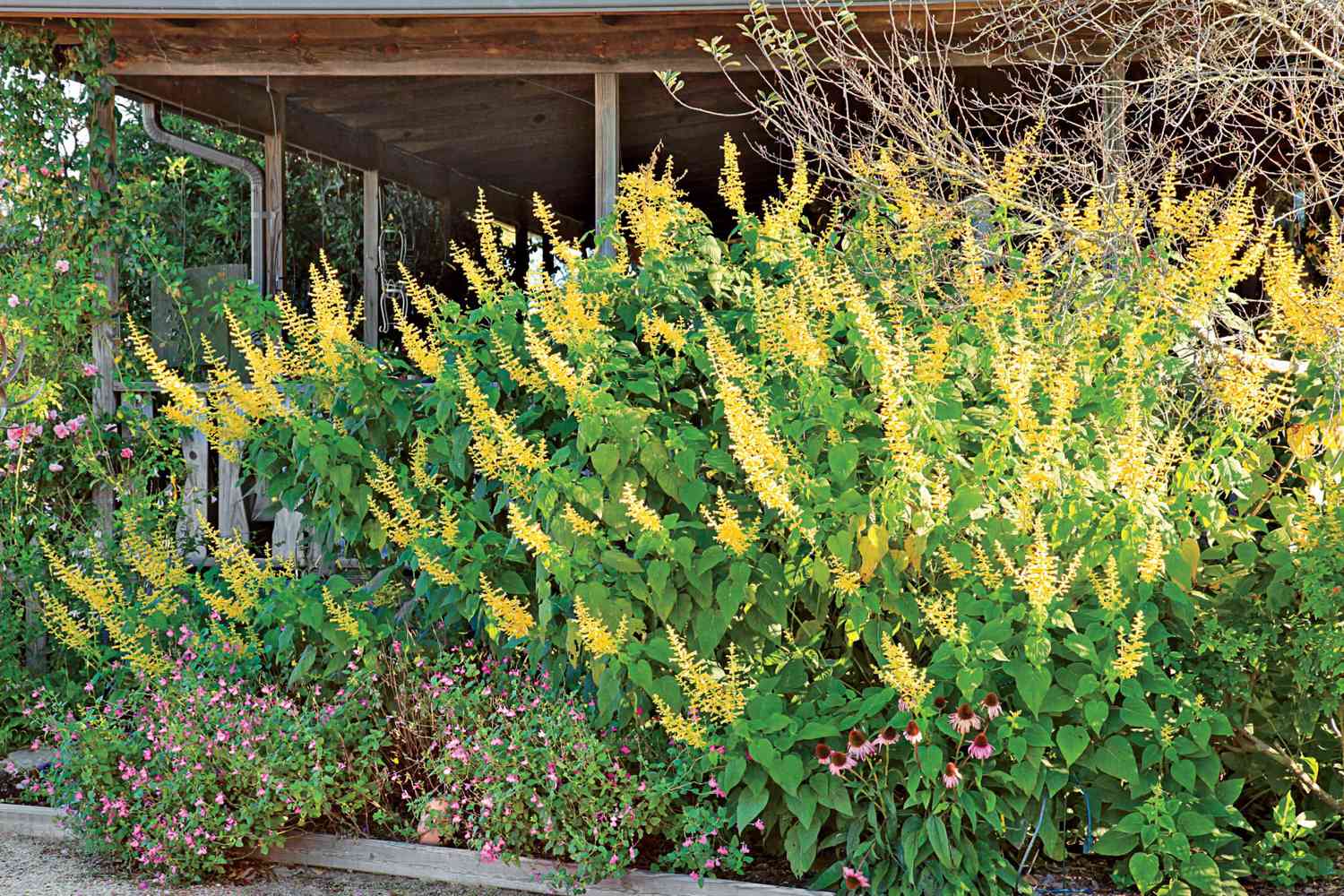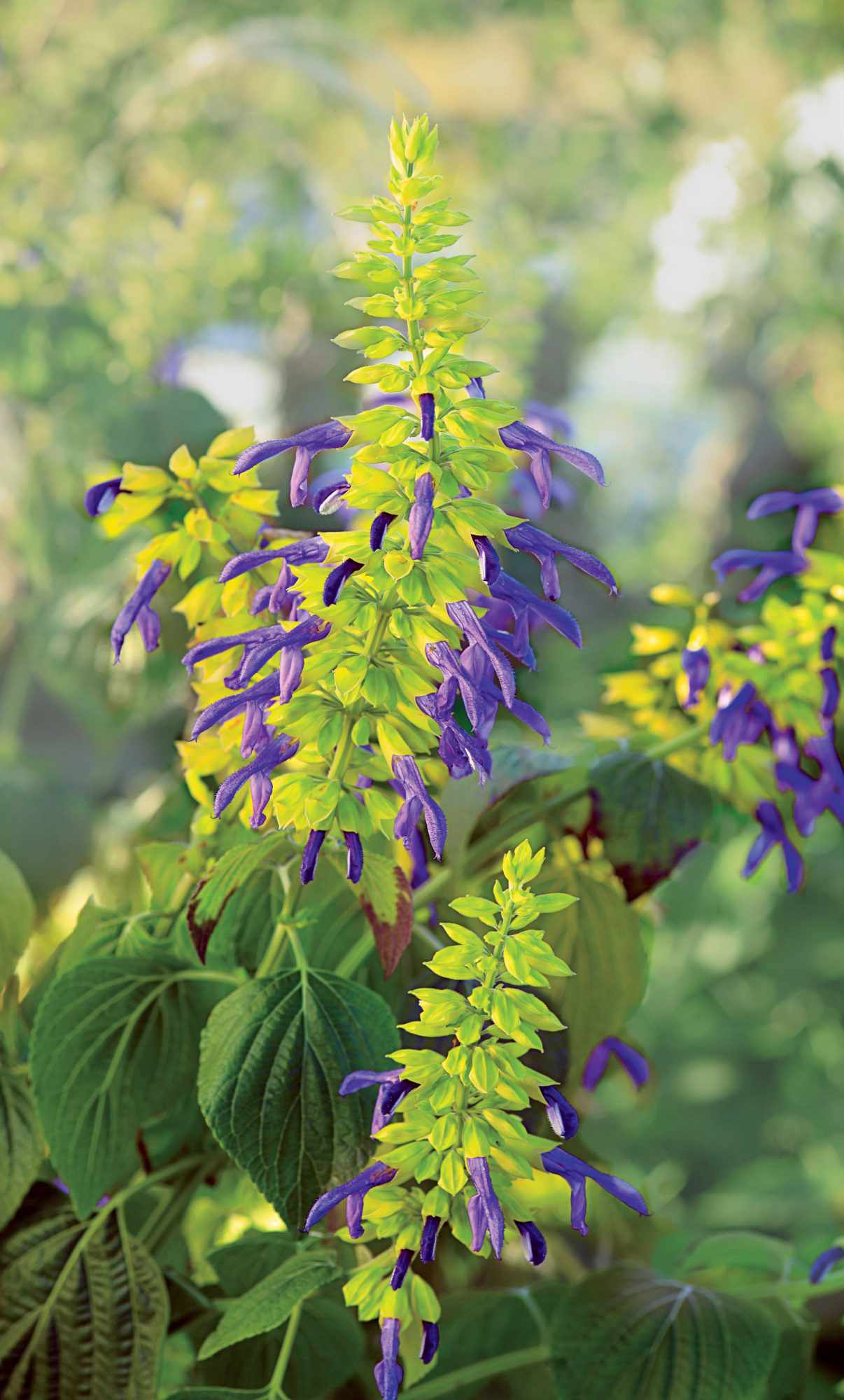Sage is a member of the mint family, and joins oregano, rosemary, basil, and thyme as one of the many herbs in this genus. The scientific name is Salvia officinalis, and more than 900 species of sage grow worldwide.
This herb is known for its medicinal properties, and there are surprising nutritional benefits to its makeup. Sage is very high in vitamin K, and carries the benefits of vitamins A and C as well.
What we like about having save in the garden is the heavenly smell that lifts with a spring breeze. Between that sensory experience and the brightly colored bushes that beckon us with their vibrancy, sage is a must have for your outdoor living experience.
Autumn Sage (S. greggii)
Height: 1 to 4 feet
Color: red, pink, purple, or white
Bloom time: spring to fall
Hardiness zones: Middle South, Lower South, Coastal South, and Tropical South
Selection shown: «Navajo Pink»
Autumn sage is delightful to use as a small, ornamental, flowering shrub in a perennial bed or as a low hedge. The aromatic foliage awakens the senses and its flowers are sure to draw hummingbirds.
Pineapple Sage (S. elegans)

Height: 3 to 4 feet
Color: bright red
Bloom time: fall
Hardiness zones: Lower South, Coastal South, and Tropical South
Selection shown: «Golden Delicious»
The leaves and flowers of this pineapple sage are edible and are a sweet, flavorful addition to salads, teas, jellies, and desserts. Some people also use the dry leaves in potpourri.
Mexican Bush Sage (S. leucantha)

Height: 3 to 4 feet
Color: purple or purple-and-white
Bloom time: fall
Hardiness zones: Lower South, Coastal South, and Tropical South
Selection shown: «Santa Barbara»
Mexican sage is wonderful for attracting pollinators to the garden. Bees, butterflies and hummingbirds are attracted to this shrub. The plant is not on the menu for deer and rabbits, so may serve as a deterrent for these creatures.
Forsythia Sage ( S. madrensis)

Height: 6 to 8 feet
Color: yellow
Bloom time: fall
Hardiness zones: Lower South, Coastal South, and Tropical South
This strain of sage is a novel part shade plant that promises great big yellow flowers. It is happy with weekly watering, even in high temperatures. The foliage is quite attractive, and the huge leaves really pop as one of the most attractive pieces of this plant.
Mexican Sage (S. mexicana)

Height: 5 to 6 feet
Color: blue and yellow-green
Bloom time: summer and fall
Hardiness zones: Lower South, Coastal South, and Tropical South
Selection shown: «Limelight
This variety of sage is not for eating. Instead, it is strictly used in the garden for its graceful beauty and its delicate aroma.
Was this page helpful?
Thanks for your feedback!
Tell us why!